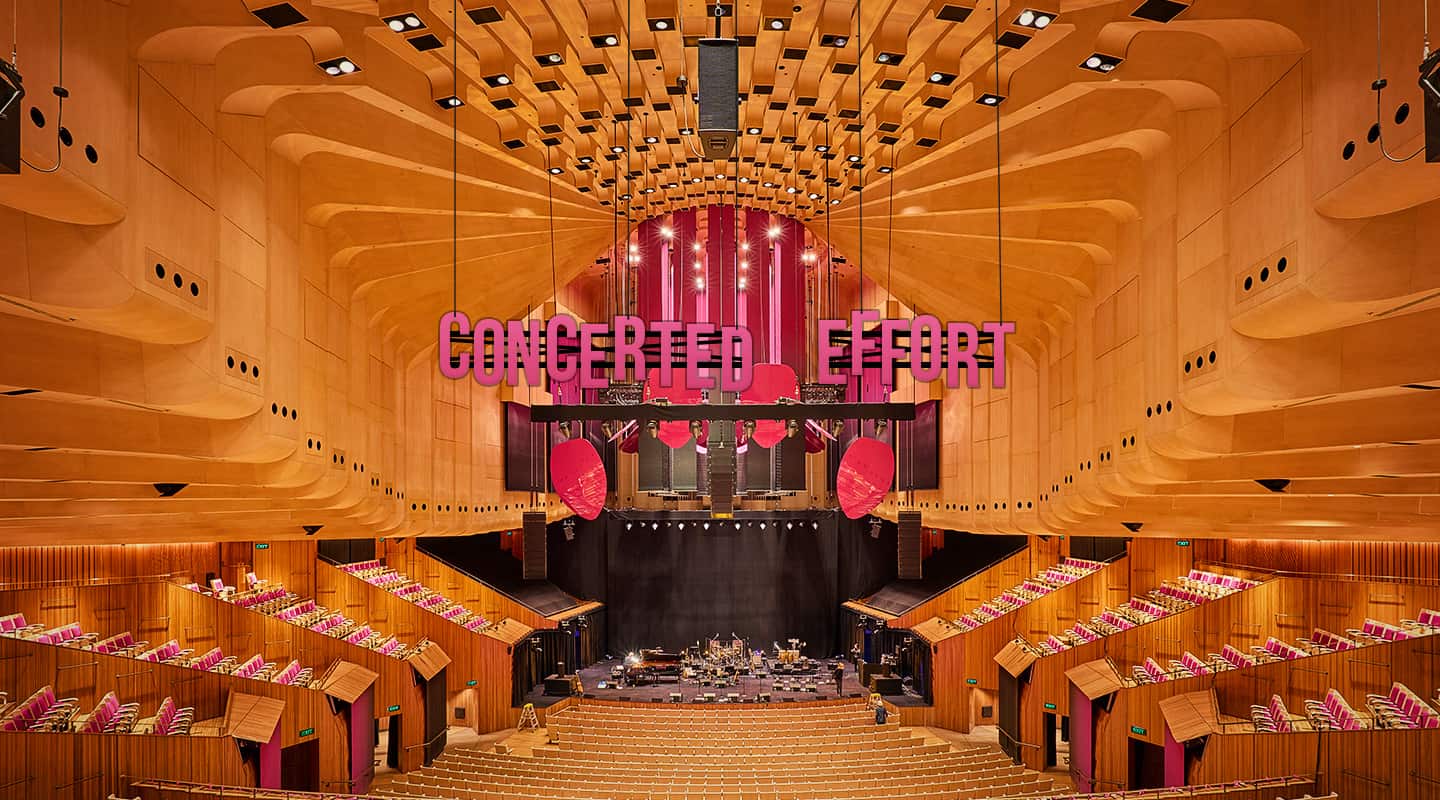
Concerted Effort
Sydney Opera House’s 10-year renewal peaks with the Concert Hall upgrade.
Everything about the Sydney Opera House is a bit different. It’s hard to fully credit how or why a public arts institution becomes quite so esteemed or how the people working in it (or for it) all feel an extra burden of responsibility to bring their A Game. But it’s obvious.
Which is to say, this is not just another story about how a performing arts centre upgraded its PA. Well, at its essence it is, but as you’ll go on to read, the level of planning, complexity, and pressure to get it right, is all beyond next-level.
50 YEARS ON
The Sydney Opera House had embarked on a 10-year period of renewal leading up to its 50th birthday (later in 2023). The Opera Theatre was given plenty of love back in 2017/18 and then it was the Concert Hall’s turn.
The Opera Theatre programming has the consistency of Opera and Ballet filling 90% of the roster, with the orchestra being enhanced by a VIVACE object-based mixing and convolution reverb engine, and d&b speaker system. Meanwhile the Concert Hall upgrade needed to scratch many more itches.
When originally opened, the Concert Hall’s purpose was to be the home of the Sydney Symphony Orchestra, full stop.
Today, it’s still the SSO’s home ground, but the programme is far more varied — Wagner one day, Wu Tang Clan the next. Not only is the programming hugely diverse — from entirely acoustic performances, to high-intensity amplified — the turnaround times are tight — there’s a staggering 98% annual occupancy across its venues. The renewal would address these realities. The three main prongs were: improved accessibility; an acoustics upgrade, to improve the natural sound of the hall; and, finally, a theatre systems and stage machinery upgrade to provide better loudspeaker coverage of the hall, cater to a contemporary demand for heavier stage sets, and allow the crew to reset in a timely manner.
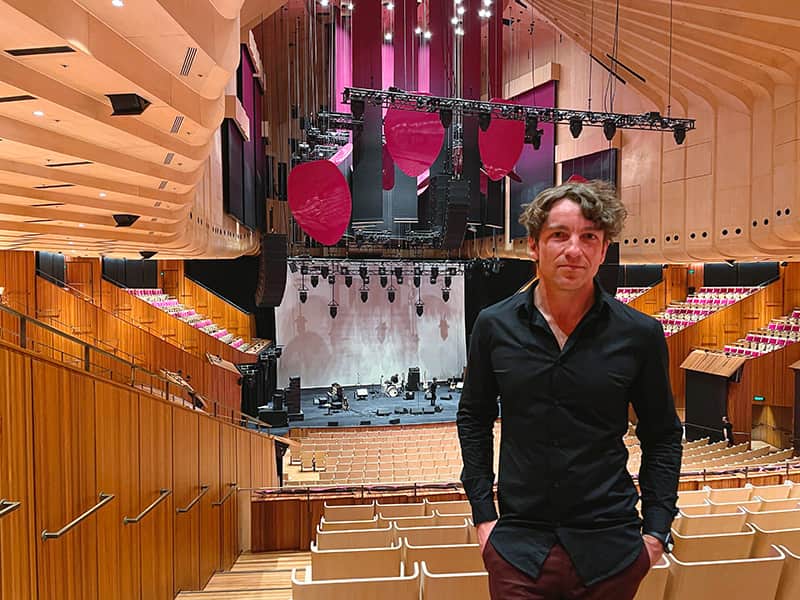
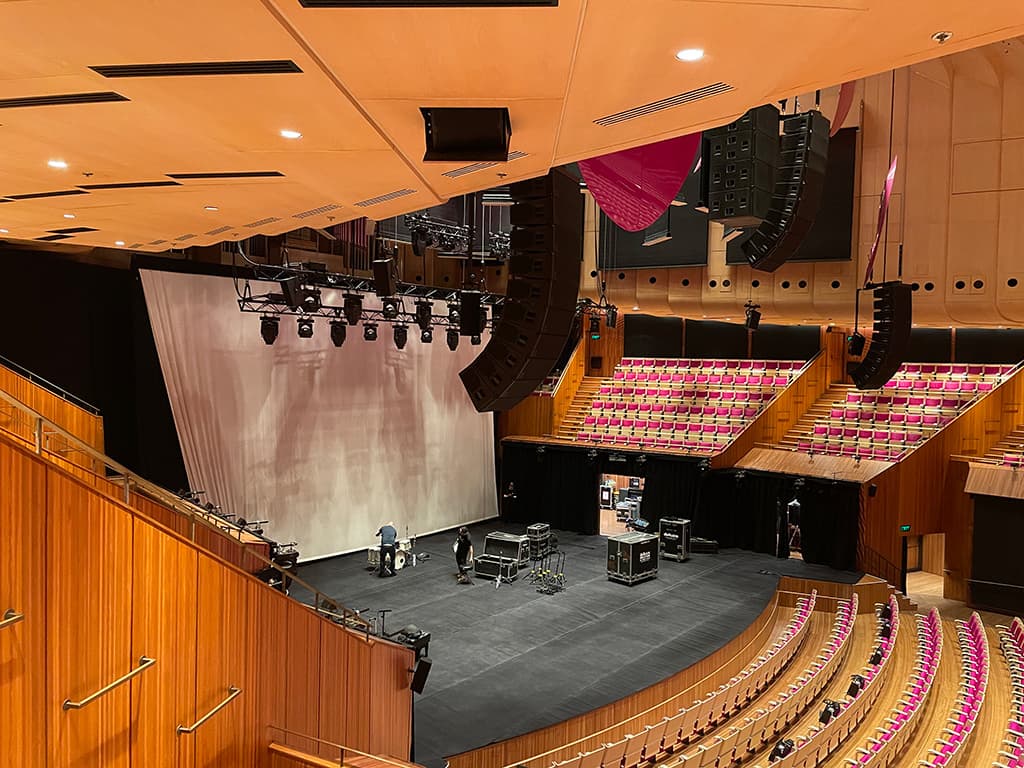
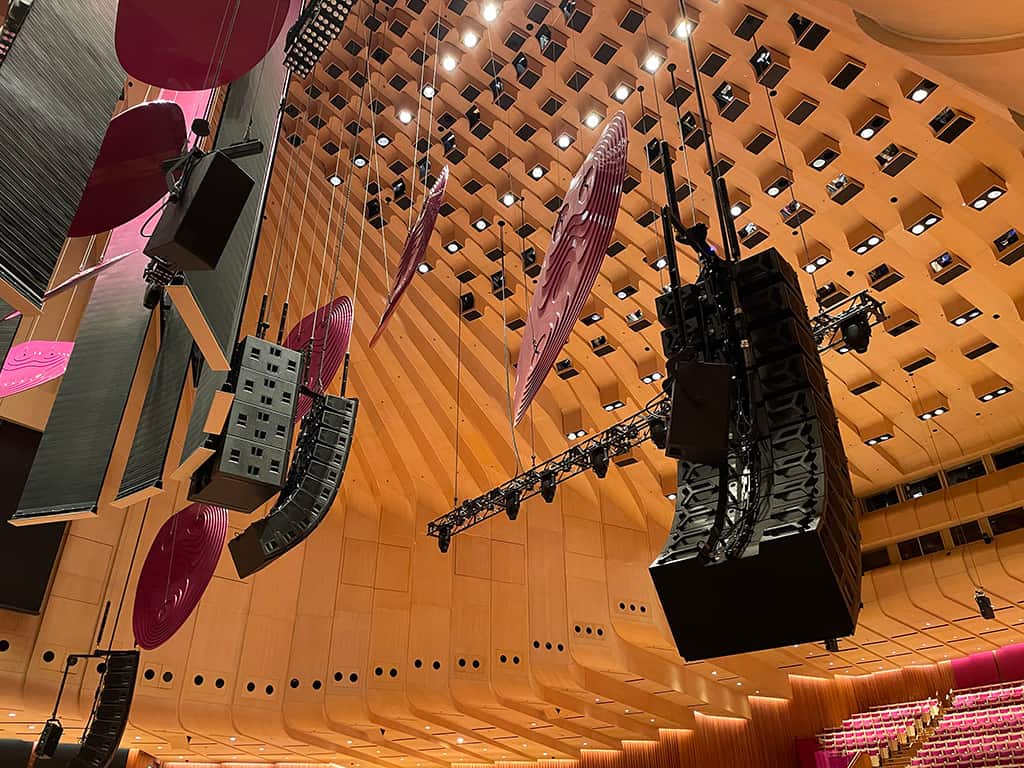
EARLY REFLECTIONS
I met on-site with Roy Cressey, then Head of Sound & Audio Visual. Roy’s tenure in the top audio job almost exactly matched the duration of the Concert Hall project. He started by nutshelling the acoustics fix:
Roy Cressey: “The general consensus for a while has been that the hall’s RT60 time was too long. The truth is: it wasn’t inappropriately long. Instead, a lack of early reflections presented the main acoustic challenge.”
Müller-BBM was engaged as the acousticians and set about remedying the deficiencies in the early reflection component of the room acoustic, with minimal changes to the overall reverb time.
The most visible intervention, are the 18 teardrop reflectors over the stage, which can be raised, lowered, and angled to respond to the type of music performed — six presets in all. The SSO now enjoy an acoustic canopy over their heads, while in amplified mode the stage sound gets reflected into acoustic drapes which are deployed from the crown and side walls above the stage.
Another big-ticket ‘early reflection’ response. The majority of the walls around the stage and stalls of the auditorium have changed from a flat surface to a diffused design, surface milled according to Müller-BBM’s specifications for optimal dispersion. Each 1m-square panel took some eight hours each in a CNC machine to complete! In addition, there are convex acoustic panels that are deployed from the side walls over the stage and auditorium when in acoustic mode that return to a flat stowage in amplified mode. The engineering behind how they’re stowed then deployed is quite something as well.
Another big piece of the acoustic puzzle was the stage design, the new stage was lowered 400mm, a new acoustic slab underneath and an automated set of stage risers that allow for a horseshoe configuration for orchestral music. These changes give the orchestra and audience an improved visual and sonic line of sight
Roy Cressey: “Remedying the acoustics was a massive project, but all within the constraints of minimising any changes to the appearance of the room. The work Müller-BBM has done has not only made the Concert Hall a more pleasing acoustic space to experience unamplified music, it’s also made a significant improvement to the linearity of the decay when in amplified mode with the automated absorption deployed — which has made the Concert Hall a far better room to mix amplified sound in. It’s a great improvement that has been well-received by our in-house and touring engineers.”
The general consensus for a while has been that the hall’s RT60 time was too long. The truth is: it wasn’t inappropriately long. Instead, a lack of early reflections presented the main acoustic challenge
PA UPGRADE
The Concert Hall has a new PA, based on d&b KSL, which replaced the d&b J-Series system installed in 2008.
“What we really wanted to focus on, was making sure the true fundamentals of the system coverage were absolutely exemplary,” explains Roy Cressey. “In a room like the Concert Hall, it’s easier said than done to ensure we have speakers in all the positions they need to be.”
The design is based around left/centre/right arrays of d&b KSL, a flown array of KSL subs, all complemented by distributed fills. The flown arrays are on winches to respond to the automated scene changes. The three KSL arrays are permanently flown (lifted up and largely out of sight in the acoustic modes, and lowered for amplified performances) while the subs are rigged and flown when needed. It’s a very neat, well-resolved look.
“The overriding factor behind the KSL choice was its pattern control, and in that regard it’s exceptional. We wanted to ensure we had a good line length of speakers [10 per hang] to give us that control, as well as give us all the headroom we could possibly need.
“There are general benefits of flying the subs. A single source for coherence in this room is fantastic. And then having the distributed fills all around the room has been a significant improvement to the consistency of coverage across the auditorium.”
KSL TALK
“When you hear the difference between KSL and J, it’s remarkable — J is a great product but KSL is an improvement in a smaller footprint,” continues Roy Cressey. “I remember when we first tuned the system and we were working through a bunch of sources. One of the team put on a lavalier mic and started talking to the engineer who brought it up on the console: ‘Yeah, that’s great for a headset — it’s a good start’. Of course, it was a lav, not a headset, and it blew his mind. Here’s someone who had worked in the building for 15 years, and such was the difference the new PA made — he nearly fell over.
“The amplifiers are a new generation as well. The old system was on D12 amps and we’ve now incorporated Array Processing, which is the icing on the cake. We don’t want to use Array Processing to fix any problems — such as improper speaker placement — but we want Array Processing to electronically make up that last 5% for the deficiencies in the mechanical deployment of a line array. Amplifiers are a mix of d&b 40D, D80 and 10Ds.”
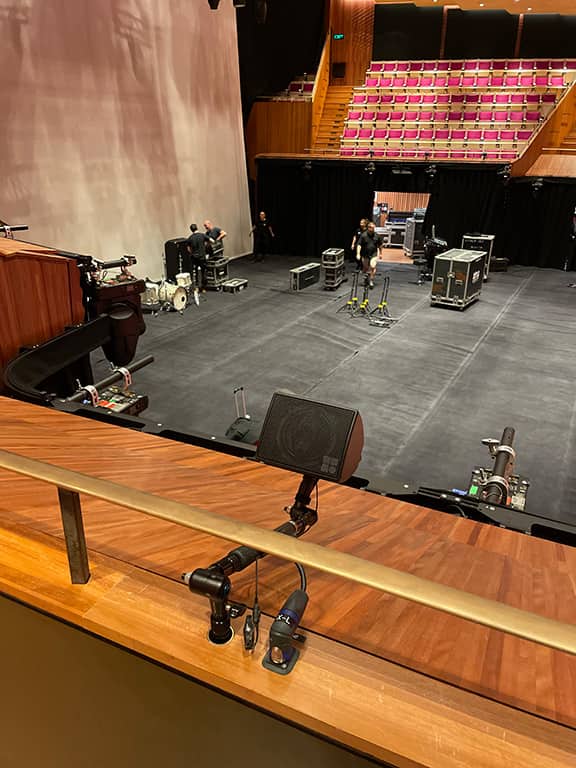
SPACE & TIME
So does the loudspeaker upgrade include include d&b’s audio spatial platform, Soundscape? No, not really. Well, kinda. But not. I’ll let Roy explain:
Roy Cressey: “We’re using the d&b DS100 as the crosspoint matrix, time alignment and equalisation of the loudspeaker system. And we also use En-Space [enhanced acoustic platform] for contemporary music but we’re not using En-Scene [object-based signal manager].”
In other words, FOH engineers are given the option of pushing some of their mix into d&b’s convolution reverb… to taste. In the DS100, there are a variety of busses that are pre-configured, level matched and aligned to cover the typical console output busses of shows. There are also utility busses available that allow designers and engineers to place spot effects or custom busses as required.
Roy Cressey: “The sound of the En-Space algorithm in here is phenomenal. Obviously, we don’t use it for the unamplified orchestral program but for amplified material that needs a light lift when we have the acoustic absorption deployed, maybe on a vocal, for example, it’s a beautiful de-correlated convolution reverb. Apart from the actual tonal quality of the sound, it’s very hard to locate. It’s just one of those things that you put in just enough, and you don’t notice it until you take it away.”
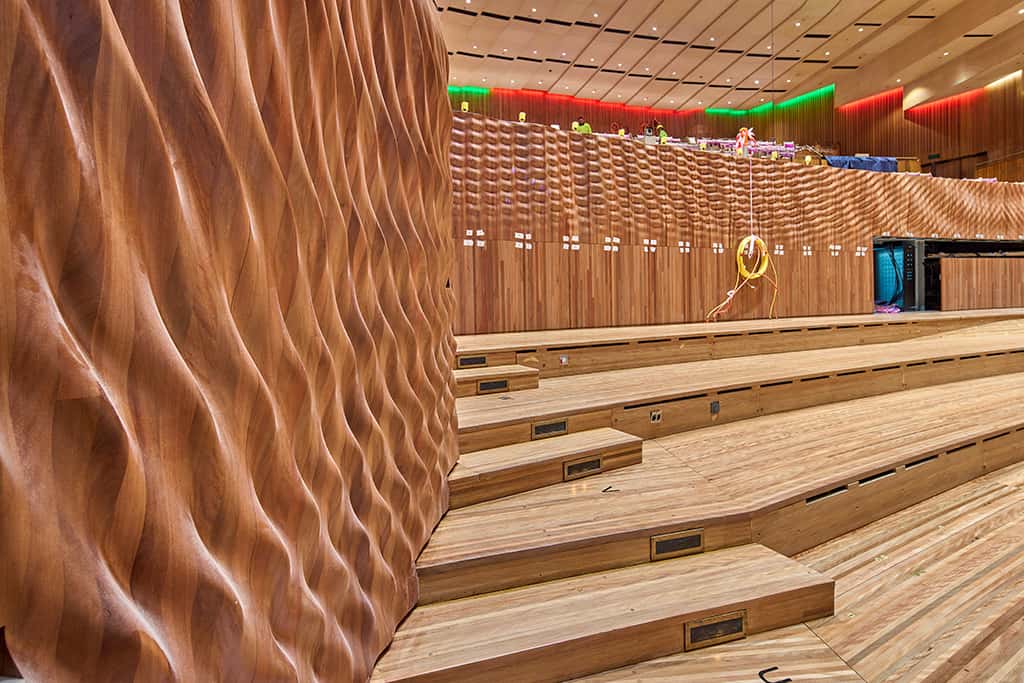
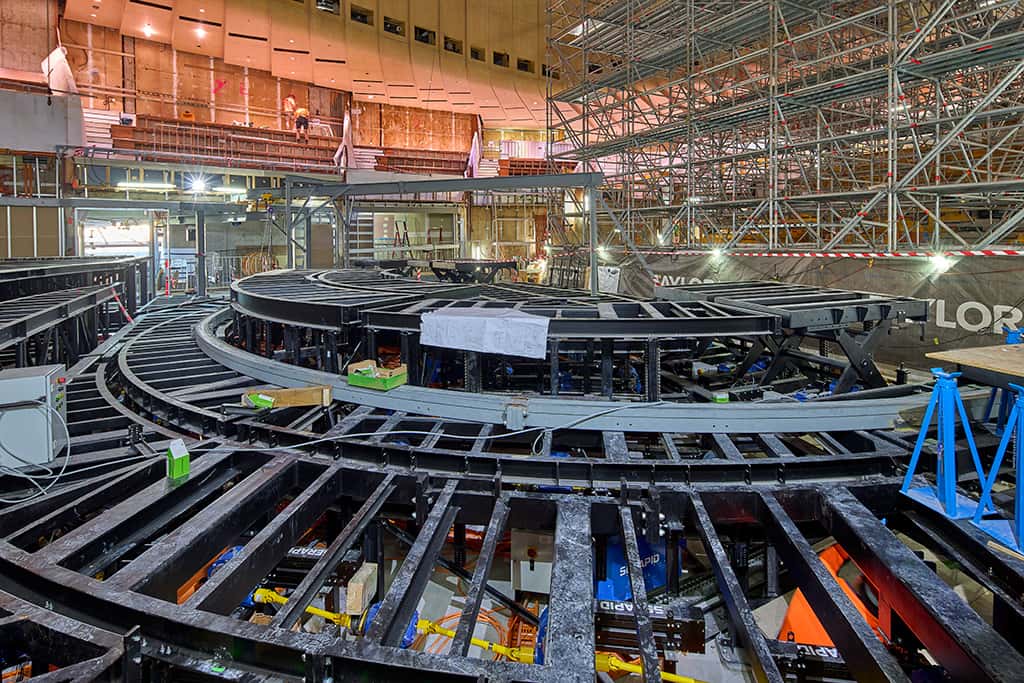
OUT OF SIGHT IMPROVEMENTS
A huge aspect of the Concert Hall renewal has occurred out of sight, up in the ceiling cavity, where you can find a phalanx of new stage machinery. Undergirding the upgrade, the builders installed 174 tonnes of new structural steel and 70 tonnes of new reinforcing steel. A quarter of the new structural steel was coated in hot pink paint to distinguish it from the primary steel that holds up the building. As you can see from the images, it’s not a standard performing arts ceiling grid. The constraints of the ceiling space and the unusual geometry, exponentially raised the level of difficulty of the installation. But the new capability gives the Concert Hall what it needs to meet the challenge of modern productions with heavier sets, increased lighting demands, LED walls etc.
Seeing the machinery squeezed into the ceiling space, cheek by jowl, also demonstrates how important it was to be precise with the position of the ceiling penetrations above the stage.
Prior to finalising the hang positions of the KSL arrays, Roy and his team did a test hang — dropping the J Series loudspeakers then using a temporary grid to hang the KSL and run a bunch of tests and measurements to validate the design.
“d&b has been great through this. We’ve got a great working relationship and they’ve gone above and beyond, We had some unique requirements with the rigging and their engineering department was of great support in developing custom flying frames for the line arrays and subs. Gareth Kelbrick from d&b, Doug Pringle and Dave Jacques from NAS joined us for commissioning and product training and they’ve been of great assistance as well.”
EVERYONE’S HOUSE
To talk about the success of this project we need to return to the key drivers. The Concert Hall is a very different venue to the one that debuted in 1973. The Sydney Opera House has opened it up to a whole host of different programming, but often they still had to say ‘no’. Now with the vastly expanded capability in the stage machinery and theatre systems that allow for streamlined resets, ‘no’ won’t be a word the Sydney Opera House will need to use very often in the future.
“We’re now far more efficient, which gives our team more time to focus on the creative side,” reflects Roy Cressey. “Tight timelines are a part of the job, by reducing our top of day set up and touring integrations, our in-house and touring engineers have more time in the day to get comfortable and focus on the art, and making the show the best it can be.”
And it’s paying off. The bush telegraph is already very positive: a gig at the Concert Hall is a great experience for everyone concerned.
As for Roy Cressey, after seeing this huge project through, he’s moving onto other challenges.
“This has been a massive project and a great journey. Obviously, the new Concert Hall opening night represented a huge pinnacle, but what I’m probably even more proud of is how all the work we’ve done and the systems in place have stacked up over the ensuing months. We’ve not had to go back to the drawing board anywhere, the systems have seen a wide variety of genres come through now and have catered to all with great results. All that painstaking planning and execution has paid off. That’s a real credit to everyone involved.”
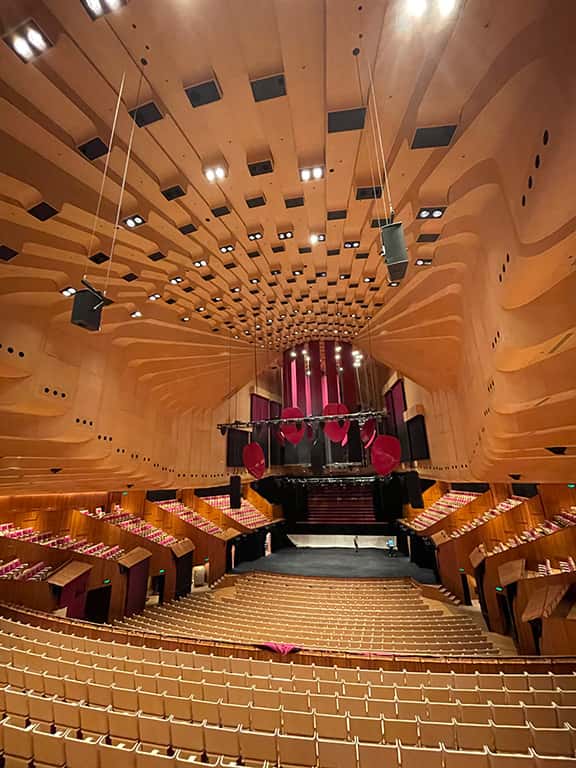
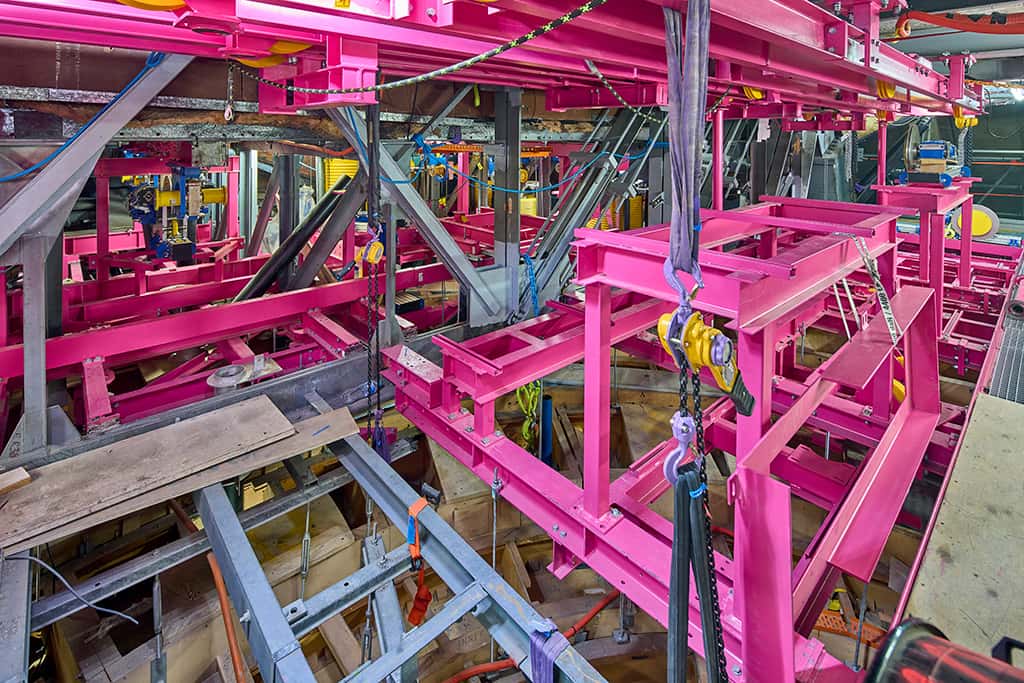
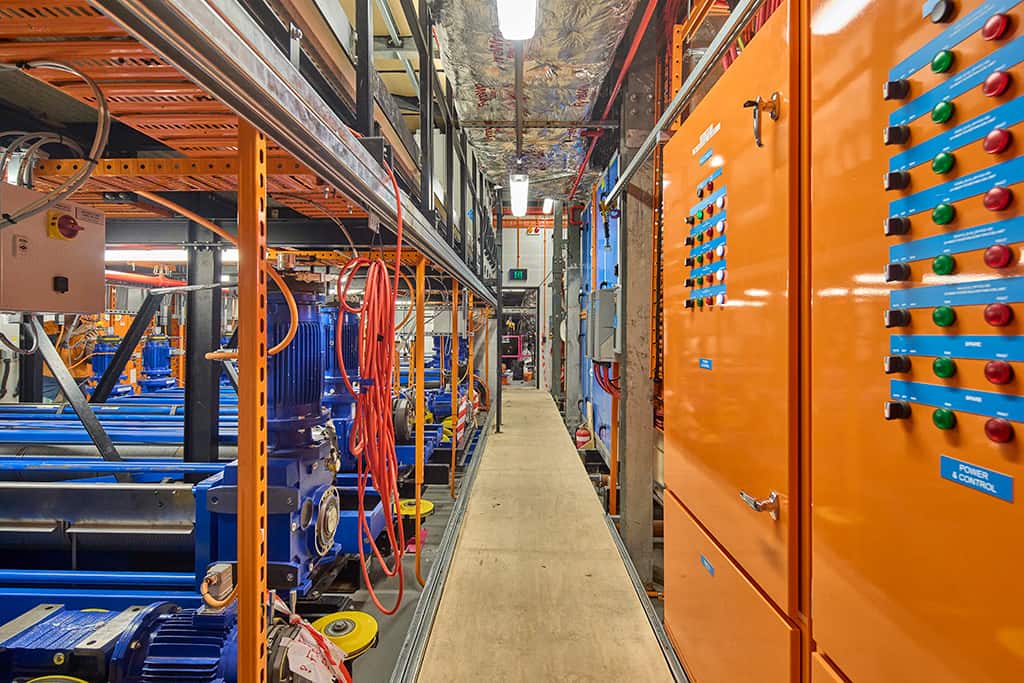
The stage machinery capabilities has been greatly increased, with a significant number of new line sets added. Some 30 tons of extra capacity in all, to meet the demands of contemporary staging, lighting and scenery.

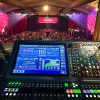


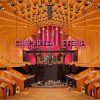
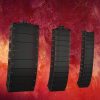

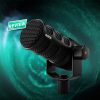




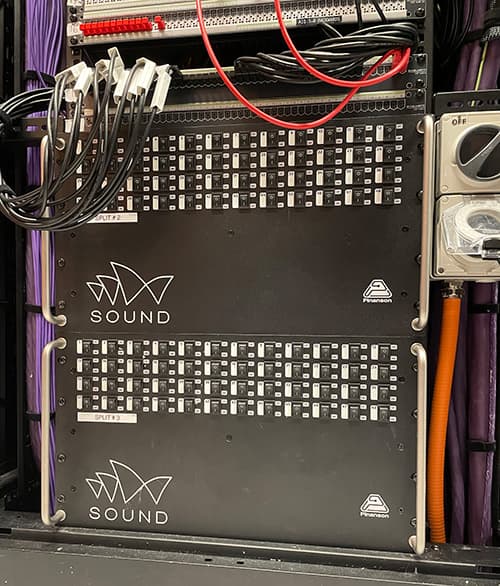
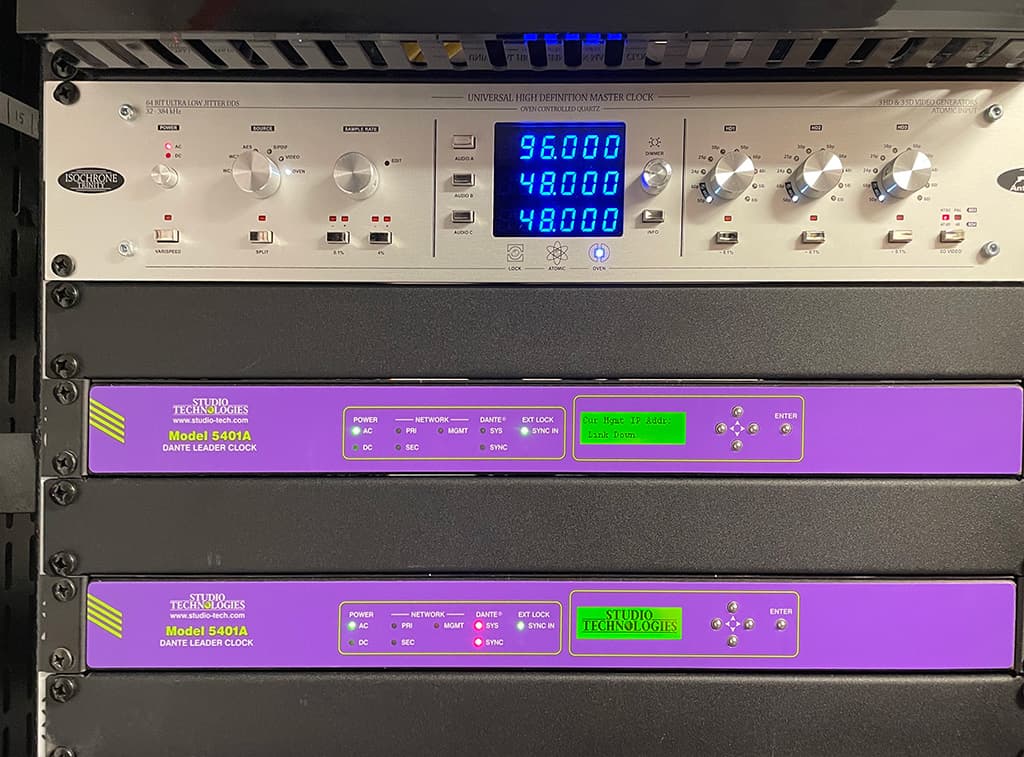
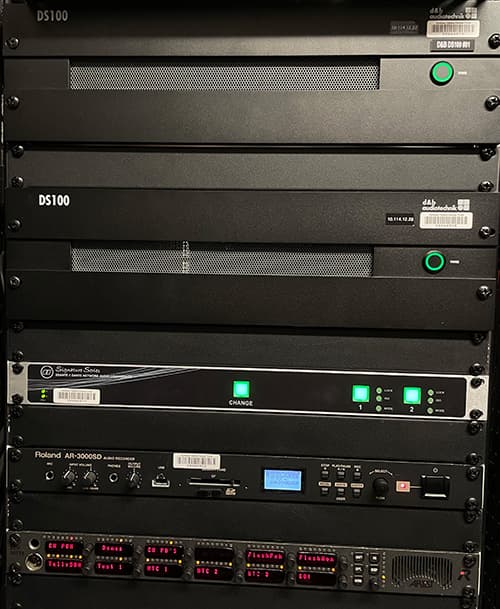

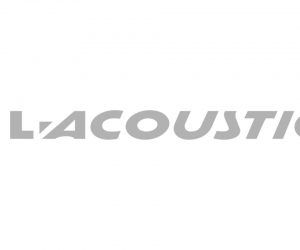
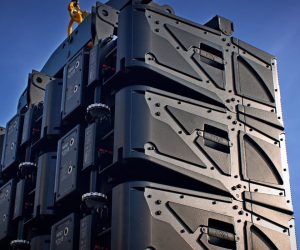
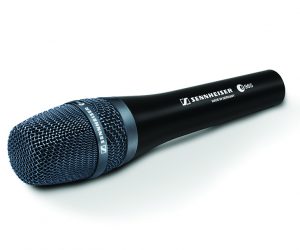
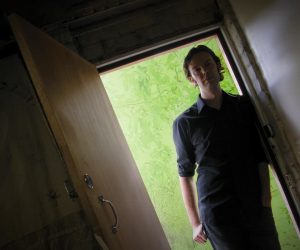
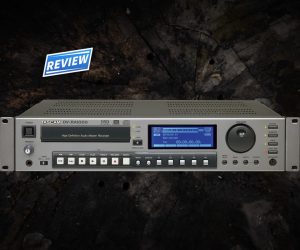
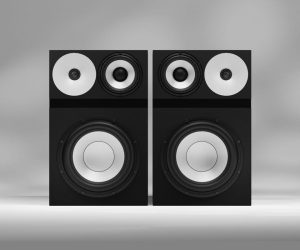
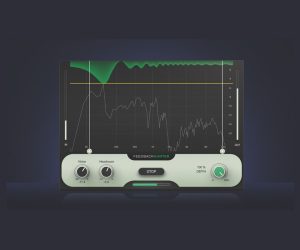
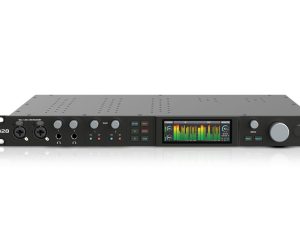

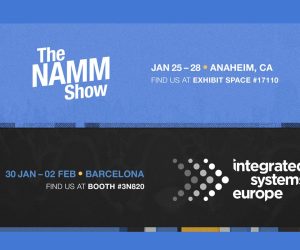




RESPONSES